DP Lol Crawley BSC harnesses KODAK film and 8-perf VistaVision to capture director Brady Corbet's The Brutalist
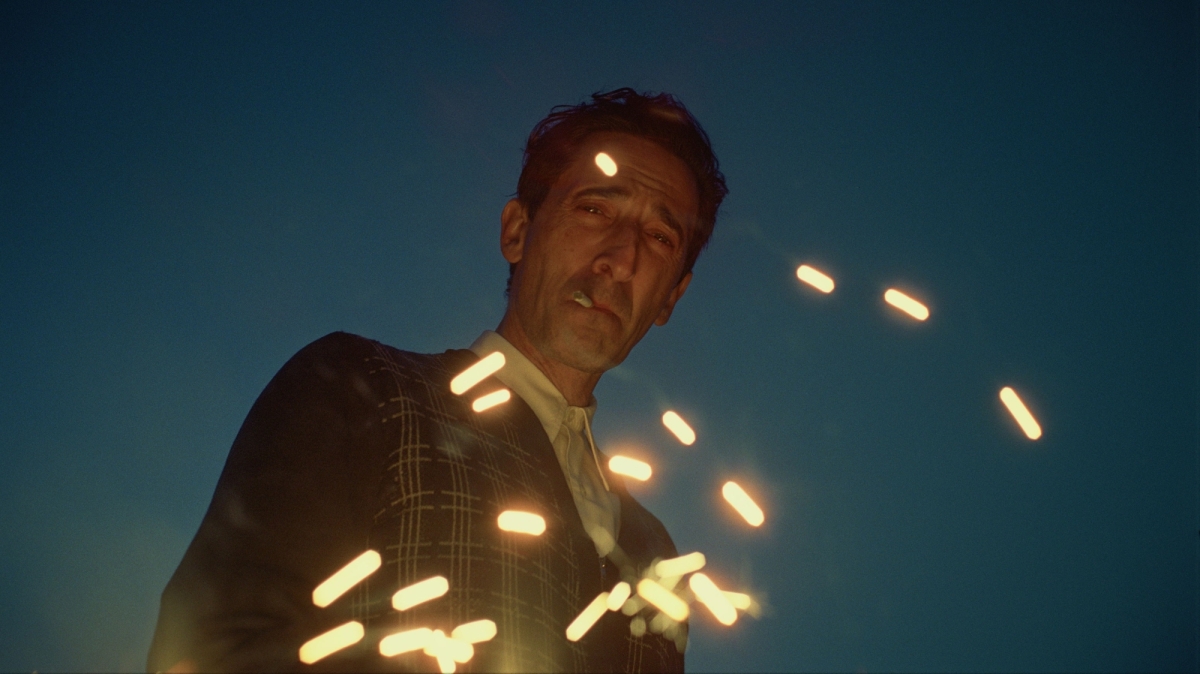
The Brutalist, directed by Brady Corbet. Image courtesy of A24.
Shot by British DP Lol Crawley BSC on Kodak 35mm film – chiefly in VistaVision for dramatic impact – director Brady Corbet's The Brutalist is a major contender during the 2025 awards season, yet it was made for under $10 million.
Escaping post-war Europe as a Holocaust survivor, the film follows László Tóth, a visionary, Hungarian-born Jewish architect, who arrives in the US, aiming to rebuild his life, his career and restore his marriage. On his own in a strange new country, he settles in Pennsylvania but struggles to achieve the American Dream until a prominent industrialist recognizes his talent with the challenge of a grand project – The Van Buren Institute, a large modernist monument and community center that includes a library, theatre, gymnasium and, at the insistence of the local municipality, a Christian chapel.
Divided into three acts, The Brutalist runs for a mighty 216-minutes with a 15-minute intermission, making it a four-hour experience for cinema-going audiences. It was directed and produced from a script that Corbet co-wrote with Mona Fastvold, and stars Adrien Brody as László Tóth, with Felicity Jones as László's wife Erzsébet, and Guy Pearce as Harrison Lee Van Buren, László's wealthy client.
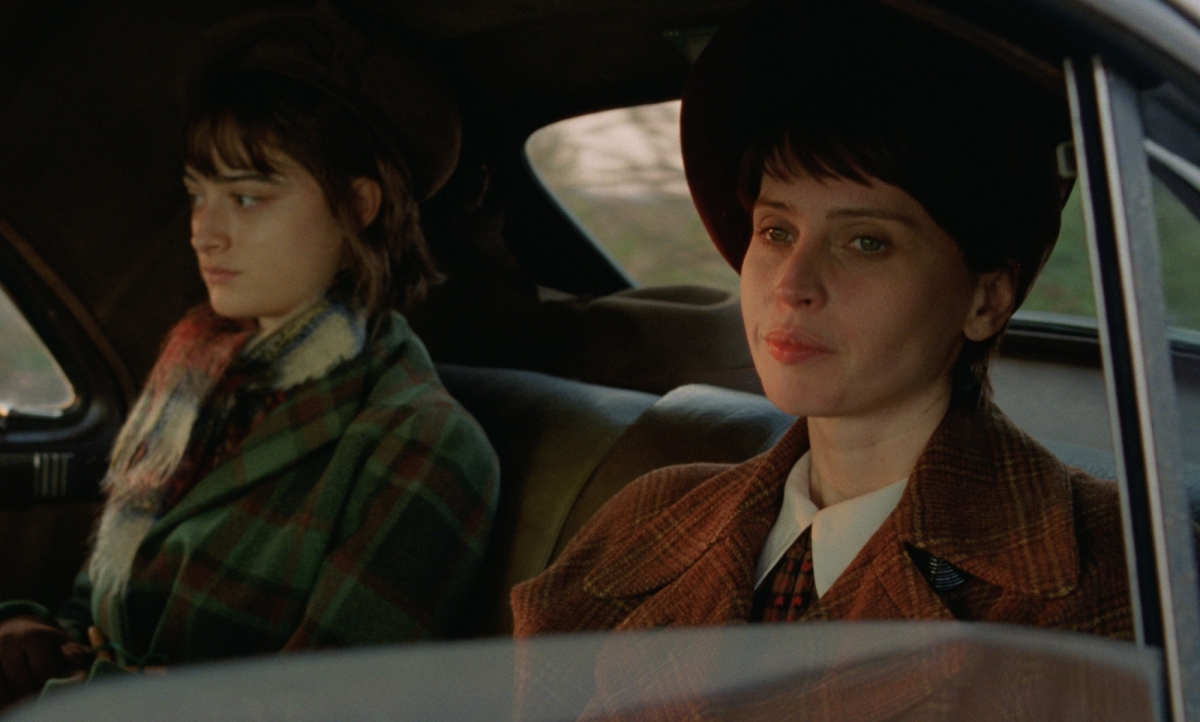
The Brutalist, directed by Brady Corbet. Image courtesy of A24.
The film had its world premiere in competition at the 2024 Venice Film Festival, where Corbet won the Silver Lion for direction, and the movie was hailed by critics as both an engrossing epic and critique of the US immigrant experience. The film received 2025 Golden Globe awards for Best Motion Picture, Best Director and Best Actor. It has also earned Crawley BAFTA, BSC and OSCARS® nominations for Best Cinematography, amongst many other nods across the main categories.
The Brutalist is Crawley's third feature collaboration with Corbet, the pair having worked previously together on the historical drama The Childhood of a Leader (2015), and the musical film Vox Lux (2018), both of which were also shot on KODAK 35mm film.
“Brady told me about The Brutalist the day that we wrapped on Vox Lux, in the parking lot of a shopping mall in Upstate New York,” Crawley reveals. “He gave me a book about brutalist architecture, and said 'This will be the next one.'
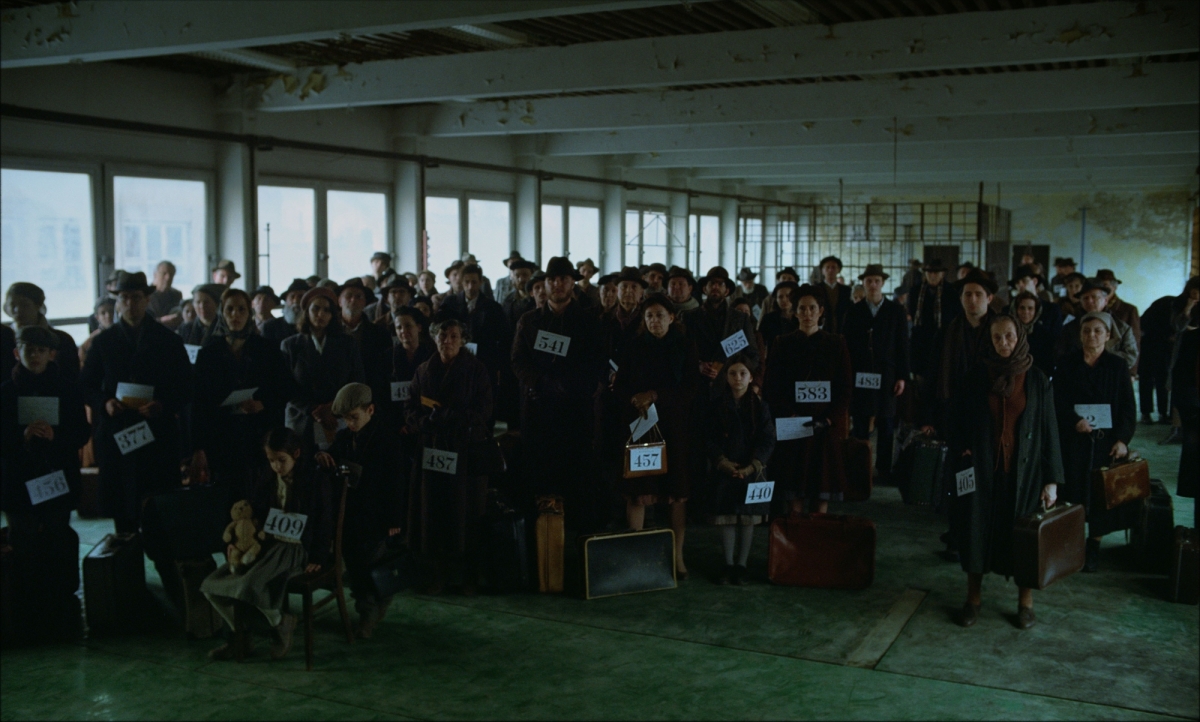
The Brutalist, directed by Brady Corbet. Image courtesy of A24.
“It wasn't until a few months later that he sent me the script, and that's when I realized it was going to be much more about the complexities of the immigrant experience – assimilation, antisemitism and xenophobia – with architecture providing suitable metaphors. Brady always raises interesting questions in his films, something to get your teeth into afterwards over a drink, and this was yet another of those.
“This story had a long timeframe – spanning László's life during the 1950s, '60s, '70s and '80s – and explores what Brady called 'the presence of the past.' Visually, he wanted the photography to have an archival quality, the feel of times gone by, and used words like 'patchwork' to elaborate on what he meant.”
Crawley says that along with exploring Corbet's brutalist architectural references, the stills work of American photographer Saul Leiter also proved an inspiration in helping him take the look of the film back in time. He also reports that this time travelling was aided in no small measure by the efforts of production designer Judy Becker, set decorator Patricia Cuccia, and costume designer Kate Forbes. The DP says he also considered modernist painters, such as Andrew Wyeth and Edward Hopper.
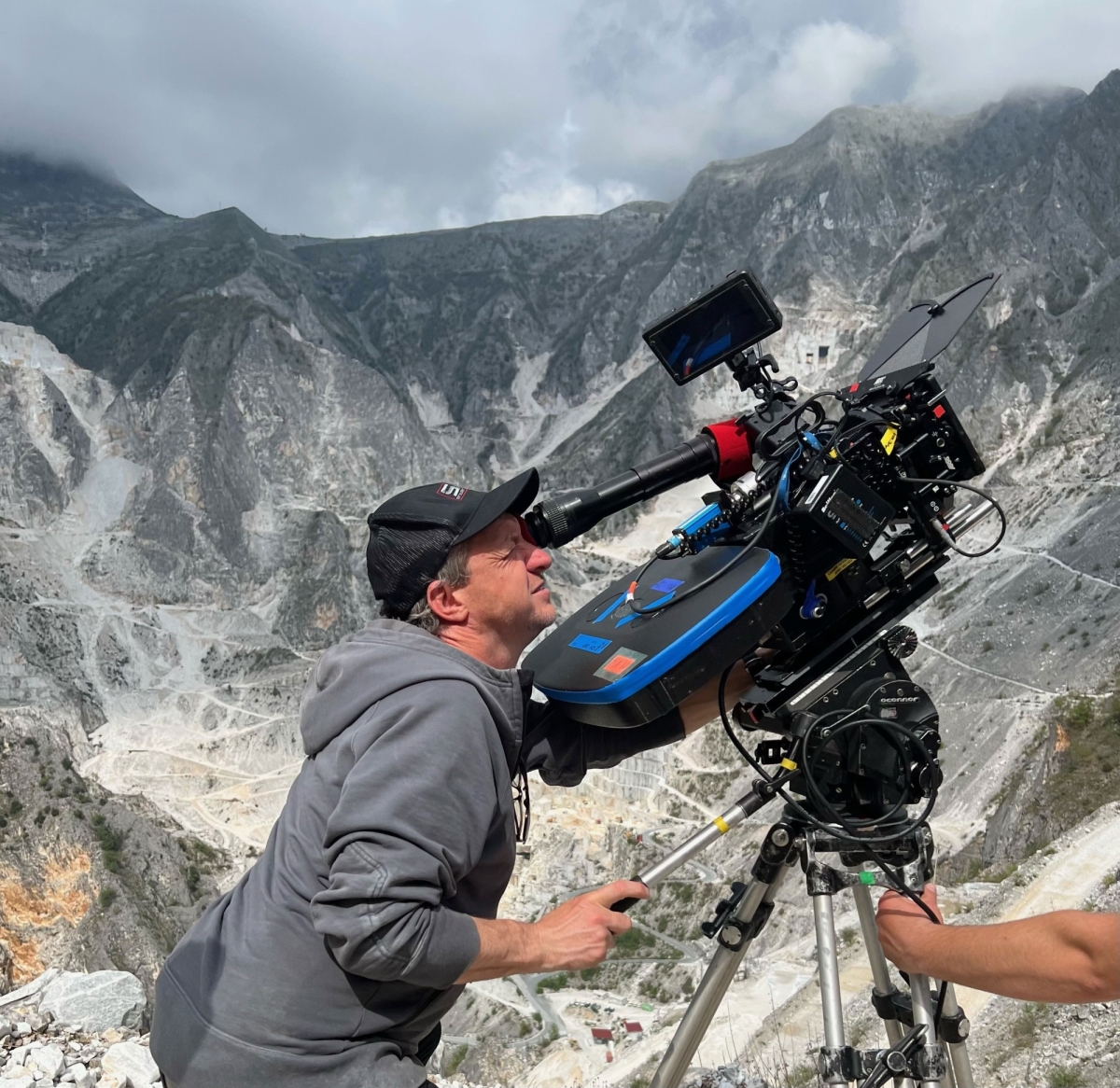
DP Lol Crawley BSC on set during production on Brady Corbet’s The Brutalist. Image courtesy of A24.
Filming on The Brutalist was originally set to start in 2020, but it was postponed due to the COVID-19 pandemic and additional delays concerning cast and crew members. After a six-week prep period for Crawley, principal photography started in March 2023 at locations around Budapest, Hungary. The production then moved to Carrara, Italy, where locations included the Riacci grocery store in Corso Rosselli, and the Bettogli and Bombarda quarries. A small camera unit was later dispatched to New York City to film Riverside and Manhattan exteriors, plus the Statue of Liberty reveal that forms the opening shot of the film. For Crawley, all of this this represented a quickfire 34 shooting days, before production wrapped in early May 2023.
As for opting to shoot in VistaVision, Crawley says, “Brady is an incredibly visual storyteller, who often has wildly ambitious ideas that become my both my responsibility and opportunity to expand on as we continually exchange ideas.
“With VistaVision, the clue is in the name itself. We scouted the magnificent landscapes of the quarries in Italy, where huge blocks of marble have been gouged from the cliff faces and galleries have been carved into the mountains since Roman times, and that's where the idea for VistaVision first surfaced.
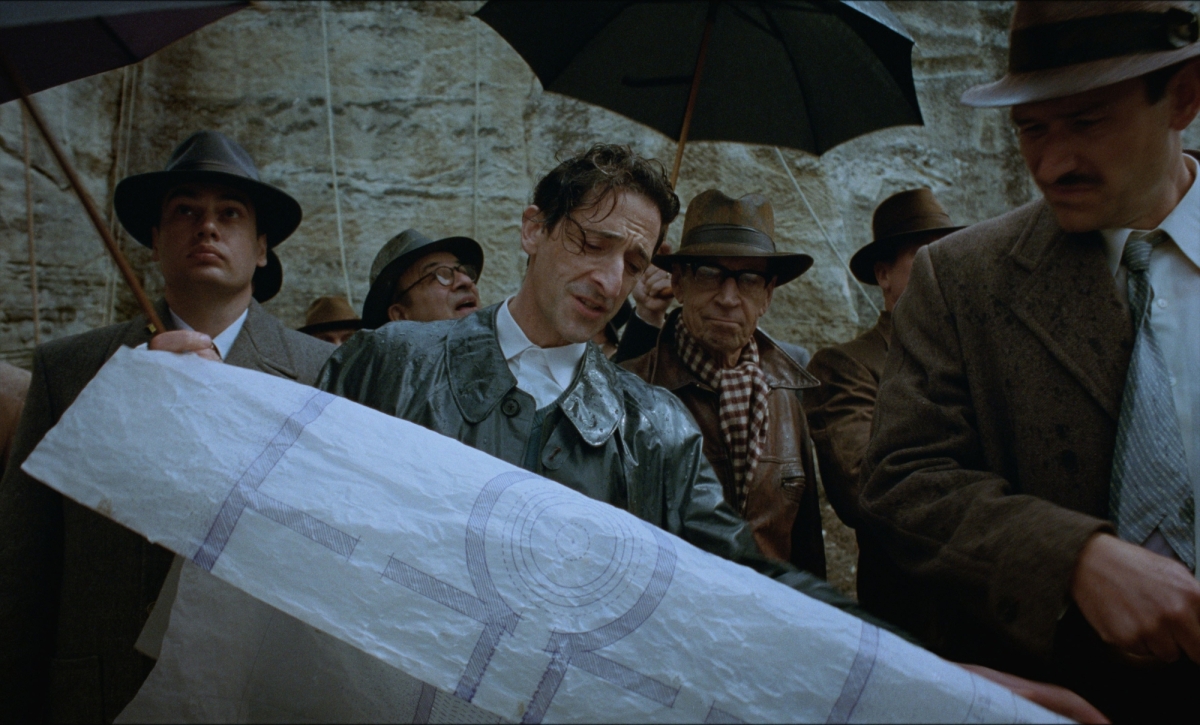
The Brutalist, directed by Brady Corbet. Image courtesy of A24.
“Although we initially conceived that we would use the format purely for big vistas like the quarries and the dockyards, we ended up shooting the vast majority of film on VistaVision – close-ups, interiors and exteriors – as the images were extraordinary. It also seemed to us that the best way to access the main period in our film was to shoot using a technology that was engineered in that same decade."
In a VistaVision camera, the 35mm filmstock is pulled horizontally though the gate rather than vertically, and the frame has an 8-perf width. 1954's White Christmas was the first Paramount film to utilize the VistaVision method, with other examples including Alfred Hitchcock's 1958 film Vertigo.
As finer-grained film stocks appeared on the market, VistaVision became obsolete. However, in recent times, along with The Brutalist, the revival of the format includes The Battle of Baktan Cross, directed by Paul Thomas Anderson, scheduled for release in the summer of 2025.
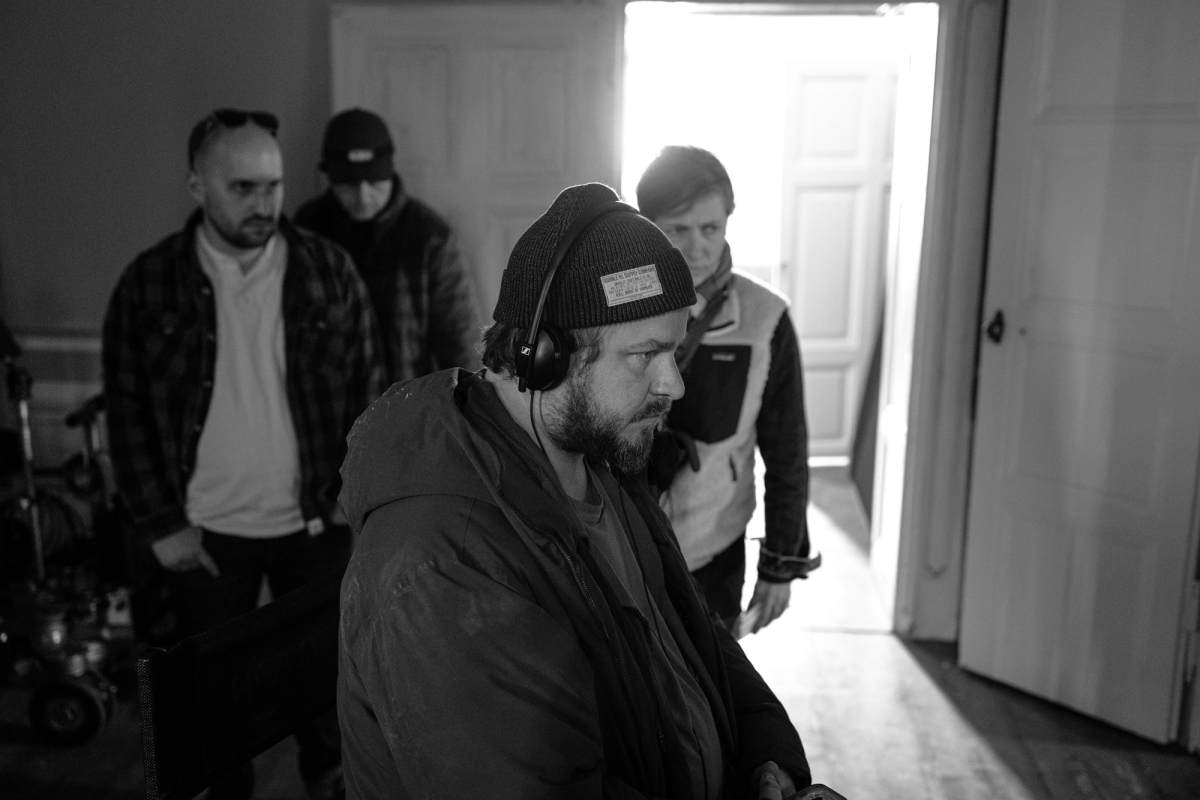
Director Brady Corbet on set in Budapest during production on The Brutalist. Photo by Marius Captare. Image courtesy of A24.
On The Brutalist, the 8-perf VistaVision rushes were scanned, with the intention of also making prints for 70mm film release, which has the same image height and is the most practical format to show the original size of the VistaVision frame when projecting film.
The choice of film as the capture medium was never in doubt, as Crawley explains.
“Brady is a director who loves film and wants to celebrate film. Even before we first worked together, it's been his stipulation to shoot his films on film, chiefly for the way it looks in telling the story. On this production he was well aware that the VistaVision format, 70mm prints, the running time, and the even the intermission, would provide a different cinema experience for people.”
The VistaVision camera and accompanying Leica-S lenses were rented from Camera Revolution, and prepped for action by the engineering team at Movietech (now part of Sunbelt Rentals), in London. Working with Vision Team in Budapest (now Vantage Vision), Crawley also hired ARRICAM ST and LT 35mm cameras for the shoot, plus the small, lightweight ARRIFLEX 235 35mm film camera for some handheld scenes, all using Cooke S4 optics. An ARRIFLEX 416 16mm camera was used to film documentary-style footage, using Zeiss Superspeeds, with a Digital Betacam to create TV footage.
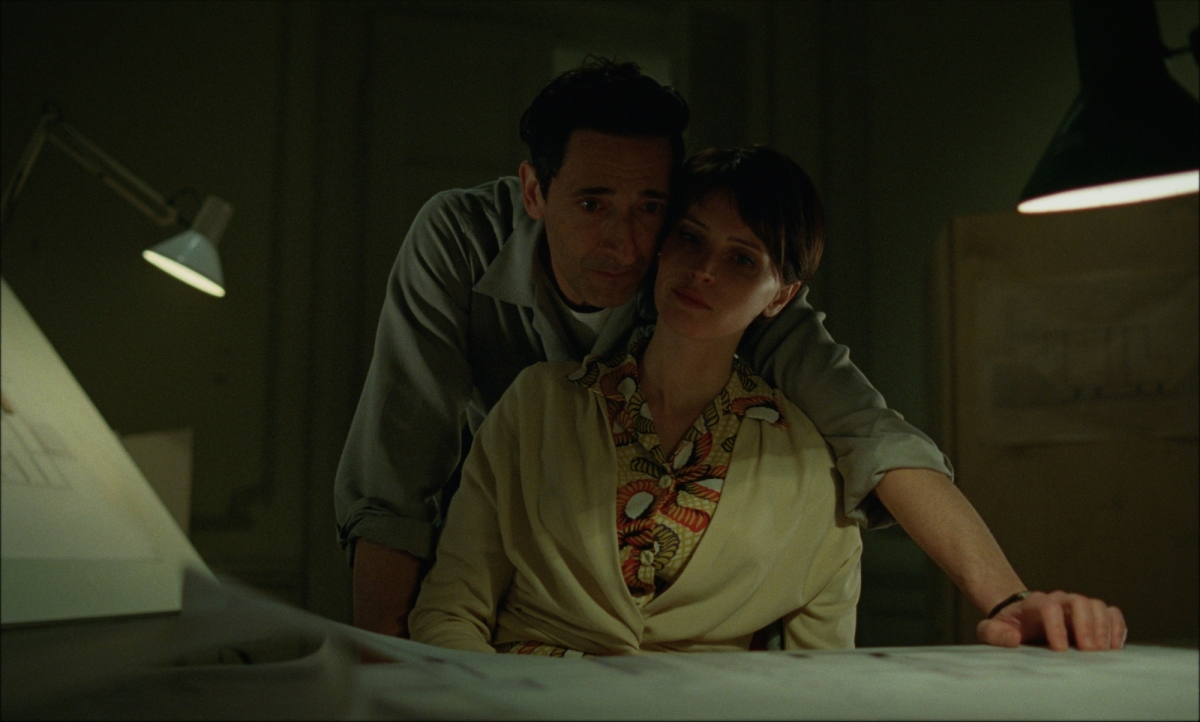
The Brutalist, directed by Brady Corbet. Image courtesy of A24.
For scenes in the jazz club and intimate moments between László and Erzsébet, Crawley also secured the services and expertise of Lester Dunton of Dunton Cine in London, who brought a specially modified ARRIFLEX 435 35mm camera to the set, featuring a mis-timed shutter that created light-streaking effects on the captured image.
“The team at Movietech were incredibly helpful and did a fantastic job in bringing the VistaVision camera up to scratch – milling new pieces, updating the electronics, and making sure the lenses worked as we wanted. The camera behaved perfectly-well during the shoot, when we were supported by local technicians Bálint Seres and Attila Ágoston who really knew their way around the camera.”
For the production, Crawley went with KODAK VISION3 250D Color Negative Film 5207/7207 and KODAK VISION3 500T Color Negative Film 5219/7219 35mm and 16mm formats, which he describes as, “my go-to film stocks. If I had to suddenly shoot first thing tomorrow morning, they would be the ones I would choose because they have grain, and I like the feeling of texture in the image. I knew that I could film all of my day/night interior/exterior shots on The Brutalist with 250D and 500T.
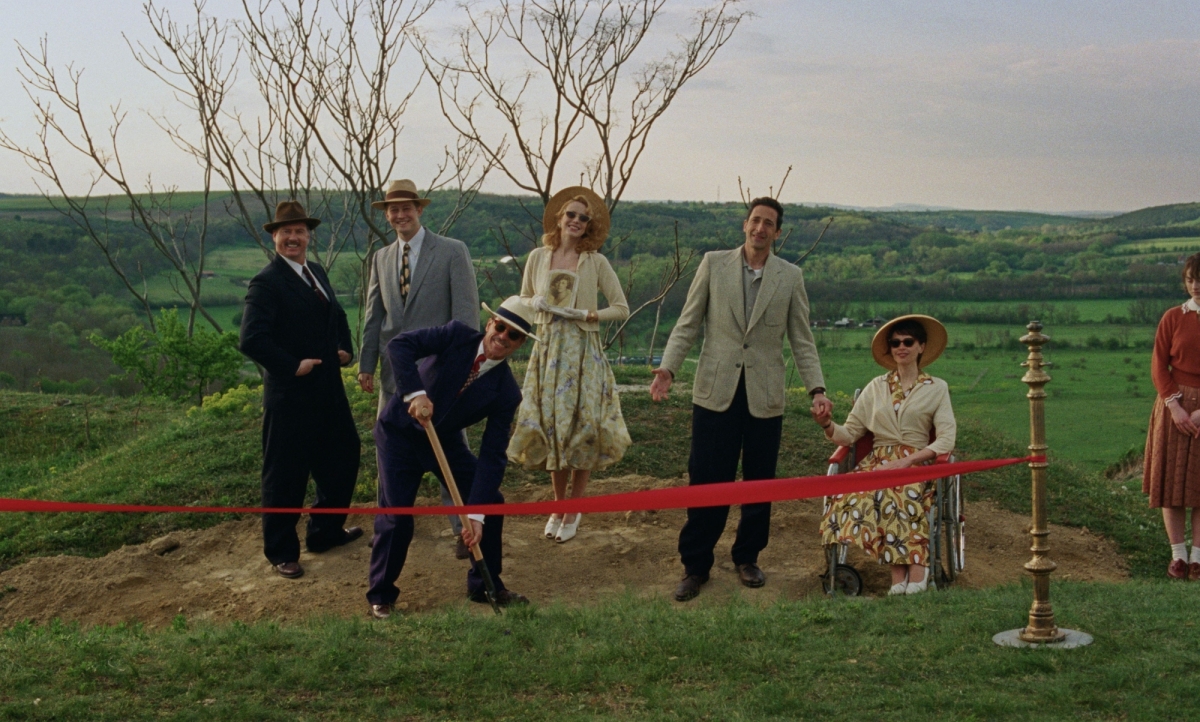
The Brutalist, directed by Brady Corbet. Image courtesy of A24.
“When you shoot digitally, there's a good chance you will see too much detail in things like the costume, set design and make-up. Even though the resolution of film is technically very high, there's something beautiful about it in the way it obfuscates the image. It gives more of an impression of a time than being just a literal representation.”
Crawley does, however, strike a note of caution. “On this production, there was the danger that the filmed images would have looked too clean and pristine because of the absolutely extraordinary resolution of the VistaVision format, and with that I ran the risk of taking the audience out of the movie.
“So I felt I needed to slightly roughen up the VistaVision footage a little, in order to retain that filmic quality. I also tend to work quite naturalistically in terms of lighting, and that invariably saw us ending up in low-light situations. Dealing with that involved quite a bit of push-processing, by one or one-and-a-half stops at the lab, to distress the film a little bit. I pushed some of the day scenes as well. When I got the dailies back from the lab, I was kind of gobsmacked at just how extraordinarily striking the pictures were.”
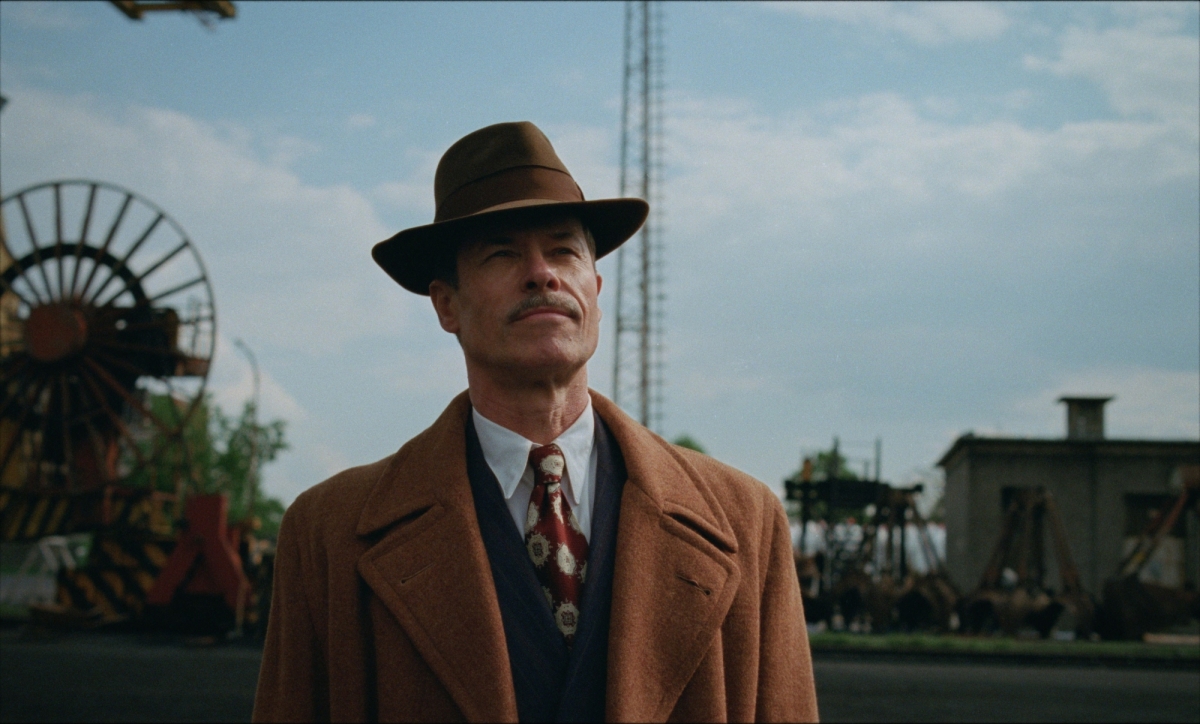
The Brutalist, directed by Brady Corbet. Image courtesy of A24.
Film processing and 4K scanning were done at Magyar Filmlabor/Hungarian Filmlab in Budapest, with the dailies and final DI grade overseen by freelance colorist Máté Ternyik, working out of the post office in Budapest.
Crawley says he sees himself as a cinematographer who leans more towards framing and camera movement than lighting per se. Consequently, he opted to operate the cameras on all of the handheld sequences – such as the long opening scene in which László fights his way through the bowels of the ship; the drunken party scene with Attila, László's cousin and his wife Audrey; plus the moment Van Buren finds Laszlo shovelling coal.
“I've always been drawn to naturalism and tend to light for the space, protecting what we like about it and what we respond to, rather than imposing a particular lighting style. That allowed me to move the camera in a way that really connects with the character. DPs such as Robbie Ryan BSC ISC do that to such wonderful effect and, as a cinematographer, it's such a beautiful privilege to operate the camera in those moments with the actors and to respond to them.”
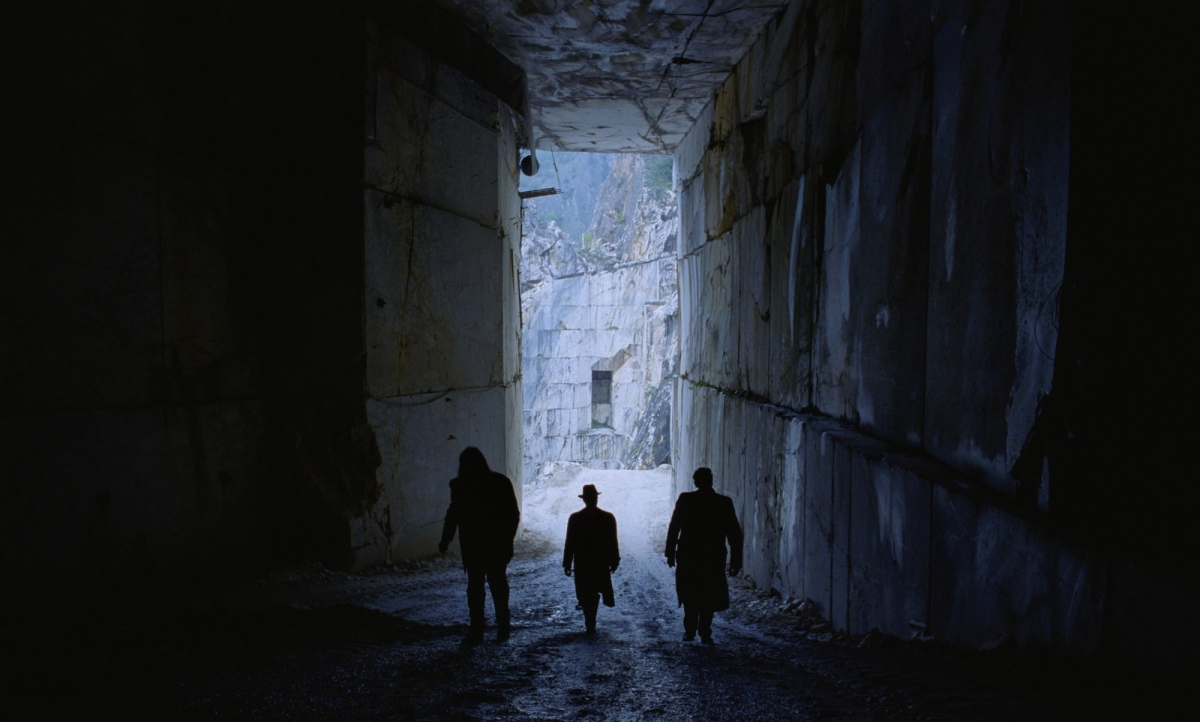
The Brutalist, directed by Brady Corbet. Image courtesy of A24.
On more complicated scenes, such as the long 'oner' when Erzsébet accuses Van Buren of assault during a dinner party at his house, Crawley handed the reins to Hungarian Steadicam operator Attila Pfeffer.
“Brady is very pragmatic and doesn't shoot a lot of coverage, preferring to let the camera blocking tell the story in a scene, especially during our longer takes, which were often pivotal moments in the narrative.
“The sequence in Van Buren's house, which is in effect a 360-degree shot, starts out calmly enough but ends in chaos as Erzsébet is violently ejected from the house. Brady wanted the scene to feel as if the camera moved between different modes during the take – from floating to handheld and back to floating. Attila operated the Steadicam for the whole take but has a way of operating as if it was a handheld camera. It was very challenging for him to manhandle the camera, and also in terms of concealing the lighting, but we managed to hide things where we could, and it worked out really well.”
Crawley concludes, “Brady is a very kind person who has become a dear friend. Being incredibly assured as a director, he is everything you could hope for in a collaborator. Under that influence, we became – crew and cast – one big family, which may sound a little trite, but that makes a huge difference when you're away from home. It all contributed to a concise way of shooting the film. And working that way, it's amazing what you can achieve on a modest budget.”